- JST Home
- /
- Strategic Basic Research Programs
- /
 PRESTO
PRESTO- /
- project/
- Creating state-of-the-art science by innovative optics and photonics/
- [Innovative optics and photonics] Year Started : 2019
[Innovative optics and photonics] Year Started : 2019
Daisuke Akamatsu
Exploring the interactions in an ultracold-nanoparticle hybrid system
Researcher
Daisuke Akamatsu
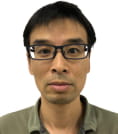
Associate Professor
Faculty of Engineering
Yokohama National University
Outline
We develop a hybrid system consisting of an optically trapped nanoparticle and laser-cooled atomic gas, and explore the interactions between a “classical” nanoparticle and a “quantum” ultracold atom. With the developed hybrid system, we specially investigate how the interanal states (e.g. electric and magnetic properties, temperature) of the nanopartice affect the interactions. We believe that the project will contribute to not only the nanotechnology industry but also fundamental science.
Ayumu Ishijima
In vivo mechano-imaging by light-induced nonlinear acoustic wave
Researcher
Ayumu Ishijima

Assistant Professor
Research Institute for Electronic Science
Hokkaido University
Outline
Fluorescence microscopy can visualize various molecules by using fluorescence probes, and it contributes to the progression of the life science field. However, it lacks the capability to image mechanical characteristics of tissues. In this research, I will develop an unique microscope that visualizes mechanical properties of tissues in vivo with cellular-level resolution by utilizing nonlinear acoustic wave as optical imaging contrast agent.
Masae Inoue(Konno)
Development of ”All-optical” electrophysiology for membrane potential manipulation of plant
Researcher
Masae Inoue(Konno)
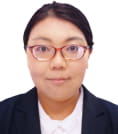
PRESTO Researcher
Japan Science and Technology Agency
Outline
Membrane potential is one of the important signals in many types of organisms. Optogenetics, which is the membrane potential manipulation technology by light, has not been applied to plants so far, because of the competition with endogenous photoreceptors and the optogenetic tools. In this project, a membrane potential manipulation tool derived from microbial rhodopsin and membrane potential sensor protein are introduced into Arabidopsis thaliana, and the membrane potential of the plant are controlled by ”All-optical” electrophysiology, which performs both membrane potential manipulation and detection using light. I will challenge to develop technology to control the membrane potential in plant.
Aruto Osada
Emerging quantum technology based on atomic‐ion quantum photonic integrated circuits
Researcher
Aruto Osada
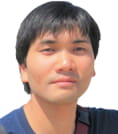
Research Associate
Graduate School of Arts and Sciences
The University of Tokyo
Outline
Atomic ions and quantum photonic integrated circuits are promising platforms for the development of photonic quantum technologies, however, the integrability and the uniformity of the two‐level systems hinder them from constructing large‐scale quantum devices. The key idea is to combine these technologies to achieve the precision of the quantum operations of ions, and the integrability and controllability of photons at the same time on a single chip. Such a technology fusion is aimed at in this resarch proposal, which may trigger breakthroughs in the photonic quantum technologies to provide a novel basis of quantum technology.
Naoya Kuse
Development of control techniques for microresonator optical frequency combs
Researcher
Naoya Kuse
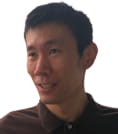
Associate Professor
Institute of Post-LED Photonics
Tokushima University
Outline
Microresonator optical frequency combs, generated from high Q micro resonators, can be chip‐scale, mass productive optical frequency combs. In my research, I will develop control techniques of the comb modes of micro optical frequency combs, aiming to develop innovative applications of the micro optical frequency combs. My research can be an important step for the micro optical frequency combs to be useful in the real world.
Masayuki Sakamoto
Elucidation of the mechanism of action potential generation by applying computer holography.
Researcher
Masayuki Sakamoto
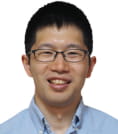
Program-Specific Associate Professor
Graduate School of Biostudies
Kyoto University
Outline
Neuron is thought to receive 1,000 - 10,000 of synaptic inputs. However, it is not well understood how individual inputs are integrated and propagated in the neuron. In this research project, to solve the problem, I will develop a new method to record and manipulate neural activity simultaneously with synaptic resolution in vivo. Then, by utilizing this technique, I will elucidate the mechanism of action potential generation.
Toshiki Sugimoto
Development of atomic scale molecular spectroscopy for unveiling local orientation of interfacial water molecules
Researcher
Toshiki Sugimoto
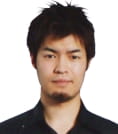
Associate Professor
Institute for Molecular Science
National Institutes of Natural Sciences
Outline
In the present study, I challenge to develop new optical microscopy for detecting orientation of interfacial water molecules with atomic scale resolution. Single molecule level spectroscopy of water at the surfaces/interfaces of functional materials will be conducted by this new technique. Basic science will be constructed for designing and controlling unique features of water molecules in the interfacial hydrogen-bond network.
Yukina Takahashi
Development of photocatalysts based on novel type plasmon induced charge separation for CO2 reduction
Researcher
Yukina Takahashi

Associate Professor
International Institute for Carbon-Neutral Energy Research
Kyushu University
Outline
I will develop novel type plasmon induced charge separation (PICS) at the interface between matal nanoparticle and p-type semiconductor, because it should realize highly efficient photoenergy conversion system. Through the development of photocatalysts based on novel type PICS for CO2 reduction, it is expected that the tecqnique which enables to utilize weak light, such as near-infrared light and room light, will be established.
Yosuke Minowa
Quantum hydrodynamics with optical trapping technique
Researcher
Yosuke Minowa
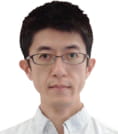
Assistant Professor
Graduate School of Engineering Science
Osaka University
Outline
Quantum hydrodynamics is a key to understand macroscopic quantum systems including superfluid helium, superconductors, and atomic Bose-Einstein condensates. In this project, we will investigate the quantum hydrodynamics with using optical trapping technique. In particular, we aim to reveal the quantum hydrodynamic properties of superfluid helium such as quantum turbulence and quantum vortex.
Yasuyuki Yokota
Development of near-field technology for molecular scale control of electrochemical devices
Researcher
Yasuyuki Yokota
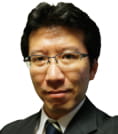
Senior Research Scientist
Cluster for Pioneering Research
RIKEN
Outline
Nanoscale spectroscopy using the near field of a metal probe is expected as a fundamental technology for realizing high-performance electrochemical devices, but the reproducibility and stability of the measurement itself are low in the presence of an electrolyte solution. In this research, we will develop the ultimate nanoscale-light source that can be used in solution environment for a long time. This will create near-field spectroscopy applicable to various electrochemical interfaces and contribute to the realization of an energy-saving society.
Kosuke Yoshioka
Realization of precision spectroscopy and cooling of a gas of carbon atoms
Researcher
Kosuke Yoshioka
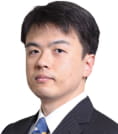
Associate Professor
Graduate School of Engineering
The University of Tokyo
Outline
Based on femtosecond optical frequency combs in the DUV and VUV regions that are referenced to an optical frequency standard, this project realizes precision spectroscopy of electronic transitions of neutral carbon atoms. In addition, the project tries to develop laser cooling and trapping methods for a dilute gas of carbon atoms via pre-cooling by buffer gas cooling. The project will open up a novel field of precision spectroscopy and low temperature science that is closely related to a wide variety of research fields of natural science such as astro-science and biology.













